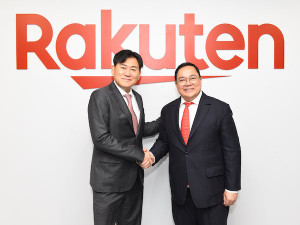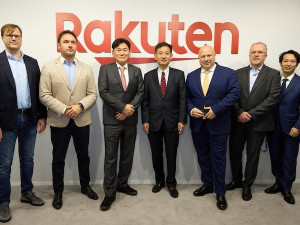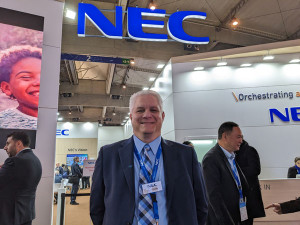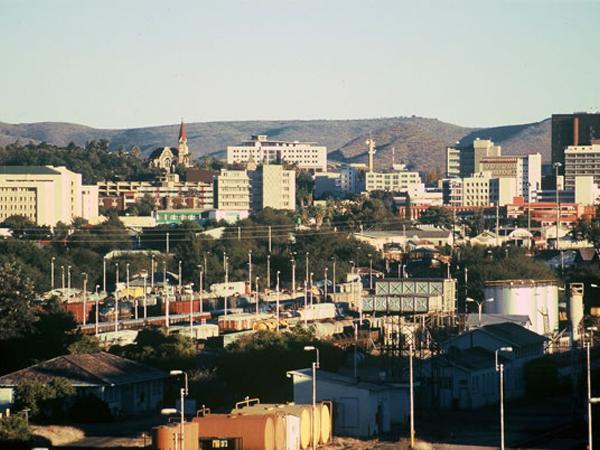Open RAN has long been billed as an appealing option for vendors in emerging markets but numerous factors have stalled adoption. The cost of ownership is relatively high, and a core part of the appeal – the freedom to choose equipment from different suppliers – is somewhat undermined as many operators in these regions preferred the simplicity of a sole supplier able to provide support.
However, advances in network automation may enable Open RAN ecosystems to deliver on their initial promise, as outlined by SNS Telecom & IT in their recently released report. We spoke to Asad Khan, Research Director for 5G & Wireless Networks at SNS Telecom & IT, to find out whether the automation is the factor that will help drive adoption of Open RAN – particularly in emerging markets.
Is it accurate to say that in 2024, the majority of Open RAN deployments have taken place in more developed markets? Are there notable examples in emerging markets yet?
The ongoing second wave of Open RAN infrastructure deployments is largely dominated by mobile operators in developed markets, initially led by the United States, Canada and Japan. It should be noted that some mobile operators such as Swisscom are adopting Open RAN-compliant Service Management and Orchestration (SMO) and Non-Real-Time RAN Intelligent Controller (RT RIC*) platforms to provide automated network management and optimisation capabilities for their existing brownfield networks without any short-term plans for deploying Open RAN infrastructure.
In most emerging markets, we do not anticipate a large-scale transition towards Open RAN infrastructure until the second half of the decade. As part of Vodafone Group's global tender for refreshing 170,000 cell sites, we expect to see a limited rollout of Open RAN infrastructure in some of the operator group's markets in Africa.
The group's Indian operating company Vi (Vodafone Idea) has also launched an Open RAN pilot, as has domestic rival Bharti Airtel, which is initially deploying Open RAN technology at 2,500 sites in rural areas with plans to expand its Open RAN footprint to 10,000 sites by the end of 2025. In addition, Filipino operator Smart Communications, Vietnam's Viettel and several other operators have also been trialling Open RAN automation use cases such as ML (Machine Learning)-assisted channel estimation and equalisation, traffic steering, handover policy optimisation and energy savings.
*It should be noted that while the Non-RT RIC and associated Apps can be used as a centralised means of network-wide control and optimisation in both existing brownfield networks and newer Open RAN deployments, the Near-RT RIC is essentially a distributed RAN operating system for Open RAN environments.
You describe the RAN as “the most expensive, technically complex and power-intensive part of cellular infrastructure” so obviously automating aspects of RAN holds a strong appeal – how much more complex is automation in an Open RAN environment?
The most complex technical aspects of Open RAN automation include the migration of thousands of cell sites to new RIC platforms in networks where legacy SON implementations are operational; conflict mitigation to identify and resolve conflicting decisions made by multiple RAN automation applications without affecting KPIs; application portability across RIC platforms+ supplied by different vendors; and the lack of a well-defined interface between the SMO framework and Non-RT RIC*.
*Within the Open RAN community, there are ongoing efforts to define a decoupled SMO architecture to address these concerns.
+Additionally, in the case of the Near-RT RIC, the integration of corresponding third party xApps necessitates close collaboration with RAN DU/CU equipment suppliers for the exposure of near real-time control information from baseband nodes.
How have more recent advances in network automation dovetailed with advances in Open RAN in ways that are likely to boost adoption of the technology in emerging markets?
RAN automation use cases have also evolved considerably over the last decade. For example, relatively basic mobility load balancing capabilities have metamorphosed into more sophisticated policy-guided traffic steering applications that utilize AI/ML-driven optimisation algorithms to efficiently adapt to peaks and troughs in network load and service usage by dynamically managing and redistributing traffic across radio resources and frequency layers.
Due to the much higher density of radios and cell sites in the 5G era, energy efficiency has emerged as one of the most prioritised use cases of RAN automation, as forward-thinking mobile operators push ahead with sustainability initiatives to reduce energy consumption, carbon emissions and operating costs without degrading network quality. Some of the other use cases that have garnered considerable interest from the operator community include network slicing enablement, application-aware optimisation and anomaly detection.
Many of these use cases are available for implementation in the form of Open RAN-compliant xApps and rApps hosted on RIC platforms. In addition, the idea of hosting third party applications for real-time intelligent control and optimisation directly within Open RAN baseband platforms is beginning to gain traction.
HTC's 5G infrastructure subsidiary G REIGNS and RAN new entrant Viettel High Tech have incorporated DeepSig's ML-based neutral receiver software into their DU equipment to improve uplink throughput and resource utilisation, while Cohere Technologies is actively working towards the direct integration of its universal spectrum multiplier software within an undisclosed major RAN vendor's baseband platform in an effort to make the solution easily consumable for Vodafone Group's global RAN refresh tender.
Reducing the TCO for Open RAN will be essential if operators in emerging markets are to adopt it more widely – how does software automation drive this down?
By minimising human labour-related expenses, errors and speed delays associated with network configuration, performance monitoring, optimisation parameter adjustment and other operating processes, software automation enables mobile operators to substantially reduce their OpEx. Another cornerstone of OpEx reduction is energy savings.
RAN automation – supported by AI/ML algorithms and closed loop optimization – has the potential to reduce energy usage by as much as 25% through various approaches, such as dynamic transmit power adaptation, carrier and cell on/off switching, Massive MIMO muting, advanced sleep mode control in RUs and intelligent power management of DU/CU hardware. In addition, automation may also result in additional TCO savings through CapEx deferral – by maximising the efficiency and performance of existing RAN deployments, thus delaying further infrastructure investments.
*Rakuten Mobile has already achieved approximately 17% energy savings per cell in its live network using RIC-hosted RAN automation applications. Following successful lab trials, the greenfield operator aims to increase savings to 25% with more sophisticated AI/ML models.
What kind of efficiencies can AI offer in Open RAN automation?
Having already proven to be exceptionally effective across a range of complex cellular network deployment, management and other operational automation applications, AI/ML is considered foundational to achieving the vision of intent-driven operations and zero-touch mobile networks in the future. At the individual RAN node level, AI/ML-enabled RAN algorithms are far more adaptive and intelligent in comparison to classic rule-based techniques, particularly for multi-variable scenarios.
In addition, AI/ML solutions are capable of rapidly analysing the extensive datasets generated by thousands of cell sites within the RAN and from external sources to derive actionable network insights and diagnostics, including the detection, classification, and investigation of issues down to the root cause level, which can be fed into various RAN automation applications in application areas extending from RAN design, planning and configuration to network optimisation, healing and security.


































